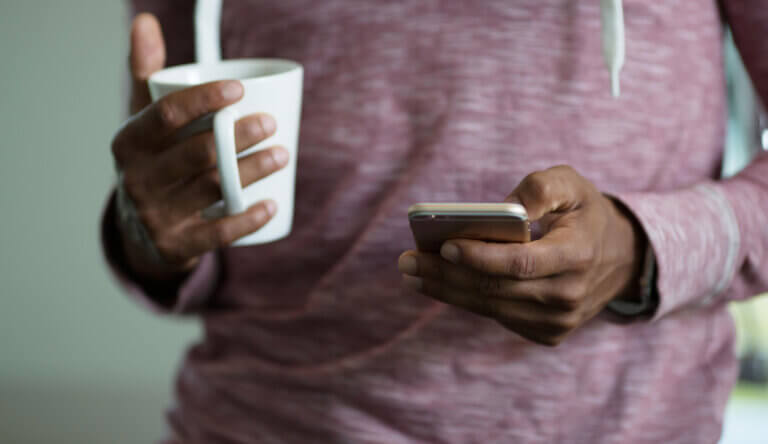
In App Marketing FAQs: How to Deliver Real-Time, Personalized Mobile Engagement Inside Your App

Share to my network
In this article
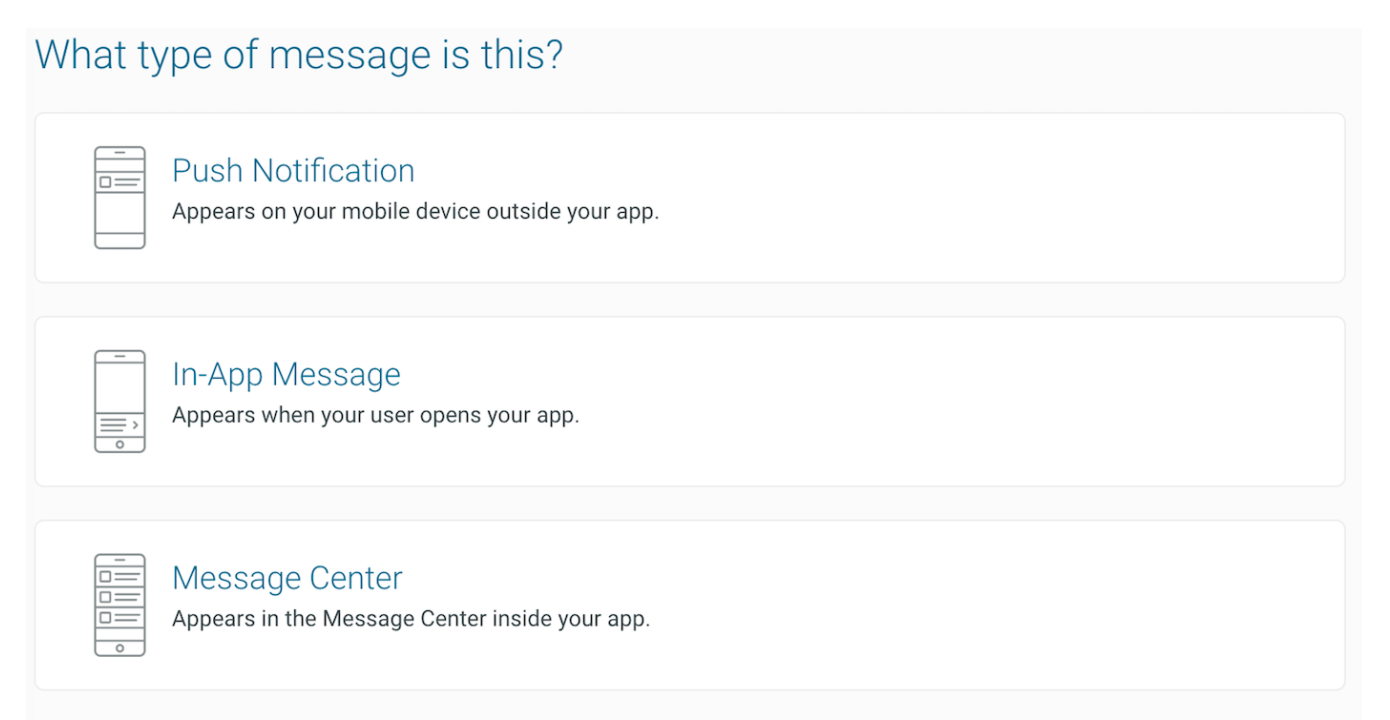 What kinds of messages is in-app marketing best suited for? Ready To Get Started?
What kinds of messages is in-app marketing best suited for? Ready To Get Started? Categories
Book a meeting
Connect with our team of experts to discuss your conversion and loyalty goals, and how we can help you achieve them faster.
Get a demoIn app marketing delivers real-time, personalized in-the-moment messages to your most loyal customers, your app users. Get the scoop with answers to FAQs.
Any time someone is using your app, they’re making split-second judgements about whether or not they’re having a satisfying experience — and whether or not the app is worth keeping.
In app marketing can help you make the most of every moment spent in your app. It also has the unique advantage of reaching your customers in real-time in a competition-free environment that you control. That’s powerful.
In this post, we’re zooming in on in-app messages as an in-app marketing tool, answering FAQs and providing some examples of how top brands are leveraging this important mobile messaging channel.
What is in app marketing?
In app marketing is any marketing campaign or message designed to be displayed within your app for the purpose of reaching an active user of your app. This is in contrast to marketing your customers see outside your app (push notifications, emails, etc.). In app marketing holds an unmatched opportunity for real-time, personalized, in-the-moment engagement with your most loyal customers.
What are in-app messages?
An in-app message is any message that users receive while they are directly active within your app.
Different people have different names for In-app messages — in-app notifications, app messages, and app notifications, to list just a few. Messages that live inside of an in-app message center are considered in-app messages as well.
What can in-app messages look like?
There are a lot of options for in-app messages. The most common types are:
Banner Notifications
The simplest type of in-app message is the “banner style notification” — a ribbon-like notification at the top or the bottom of the screen of your application.
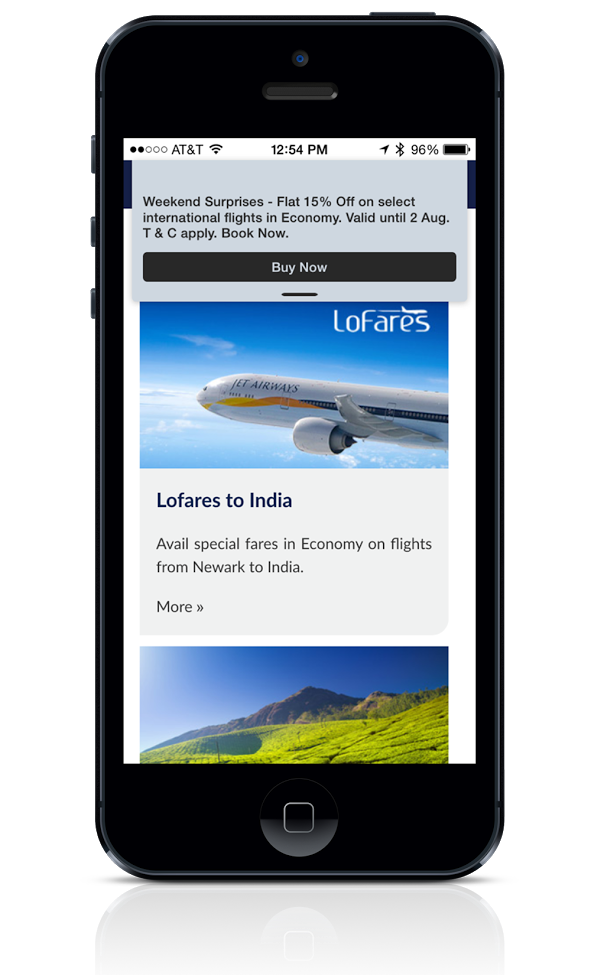
Full-Page Displays
In-app messages can also be full-page displays that provide more screen real estate to convey your message.
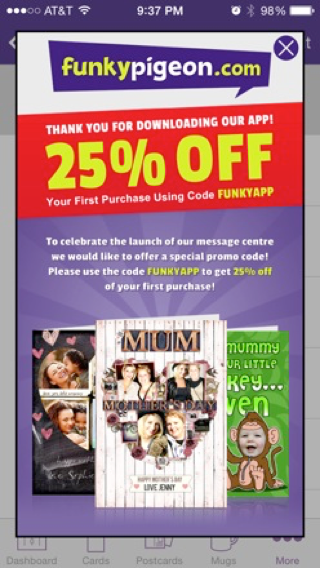
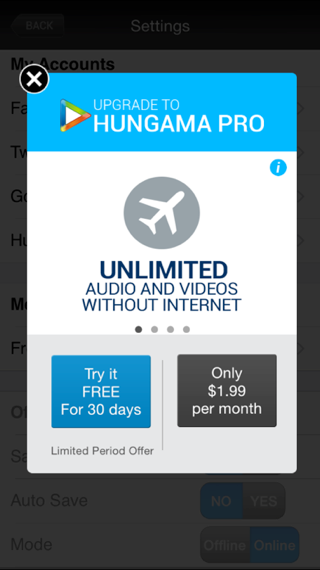
Message Center Messages
An in-app message center can be a central repository for in-app messages. Unlike banners and full-page displays, message center messages stay put until they’re deleted. Users can delete message center messages — and, if you use Urban Airship’s Engage solution, so can you, either by setting an expiration date, or with a simple API call.
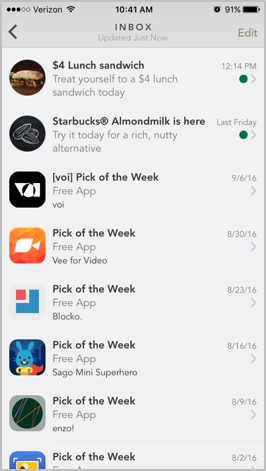
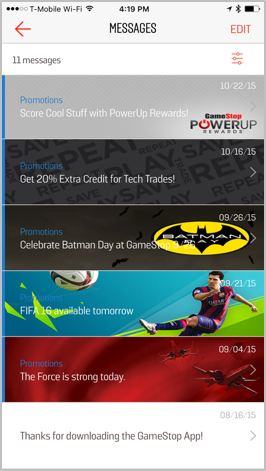
Can in-app messages use rich media?
Yes. In-app messages can display rich content like videos and gifs.
Can you use interactive buttons with in-app messages?
Yes — and doing so can create an even better user experience. We have out-of-the-box interactive buttons and emojis available for use — or you can create your own custom buttons.
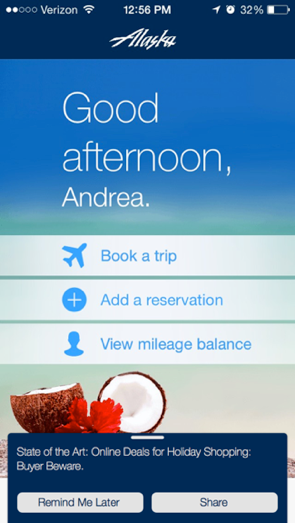
When do app users see in-app messages?
That depends on how you set them up. It’s possible to create a banner, full page display or message center message that goes to everyone who opens your app.
But you can also customize when, where and how long messages display — and who sees them. Different in-app messages might be seen at different times by different app users if you’ve created targeted in-app marketing messages personalized for various segments of your audience — which we highly recommend. (More on targeting and personalization below.)
How do in-app messages perform compared to other mobile messaging channels?
In-app marketing messages reach your customers at a critical moment: while they are active in your app. That means they are already likely to be more receptive to what you have to say — especially if it’s personalized.
Our research shows that response rates for in-app message center messages are 8x the direct response rate of push notifications. The key is making in-app messaging personalized, in-the-moment, and clearly relevant.
Can in-app marketing be targeted and personalized?
Yes — depending on the provider you use. Urban Airship makes it possible to create highly-targeted in-app messages. You can segment and personalize messages based on user actions (like a first-time app open), custom events (like purchasing an item of a certain value) and more.
You can also use real-time, on-device automation to deliver in-app marketing campaigns. For example, you can display a certain message when the user navigates to a particular screen. You can set preferences for how many times a user will see a certain message — and include start and end-dates for self-canceling campaigns.
Retailers and other m commerce apps could target users based on their purchase history. Let's say someone was browsing in an app. They added a green shirt to their cart, and then purchased it. That purchase could trigger an in-app message that includes confirmation number along with a button that encourages them to share a picture of their purchase with friends on social media.
Can I track actions taken on in-app messages?
Yes. With our solutions, all in-app messaging actions are trackable. That means you can take what you’ve learned from your customer’s in-app behavior to improve the user experience for that customer — and others. Customers who use our Insight mobile analytics solution can dive even further into their data to see trends and make decisions.
Can I send in-app messages and push notifications at the same time?
Yes. You can send an in-app message on its own — or along with a push notification to drive your users who are opted in to open the app and see the message.
Can I deep link from in-app messages?
Yes. You can deep-link in-app messages to send users to wherever it makes the most sense for them to go — whether in your app or on your mobile web site.
For example, maybe you want to do a full-screen in-app message for a last-minute ticket offer. Your in-app message can include a deep link right to the landing page in your app where they can purchase the offer — or a page on your mobile website — that allows your customer to take action right away.
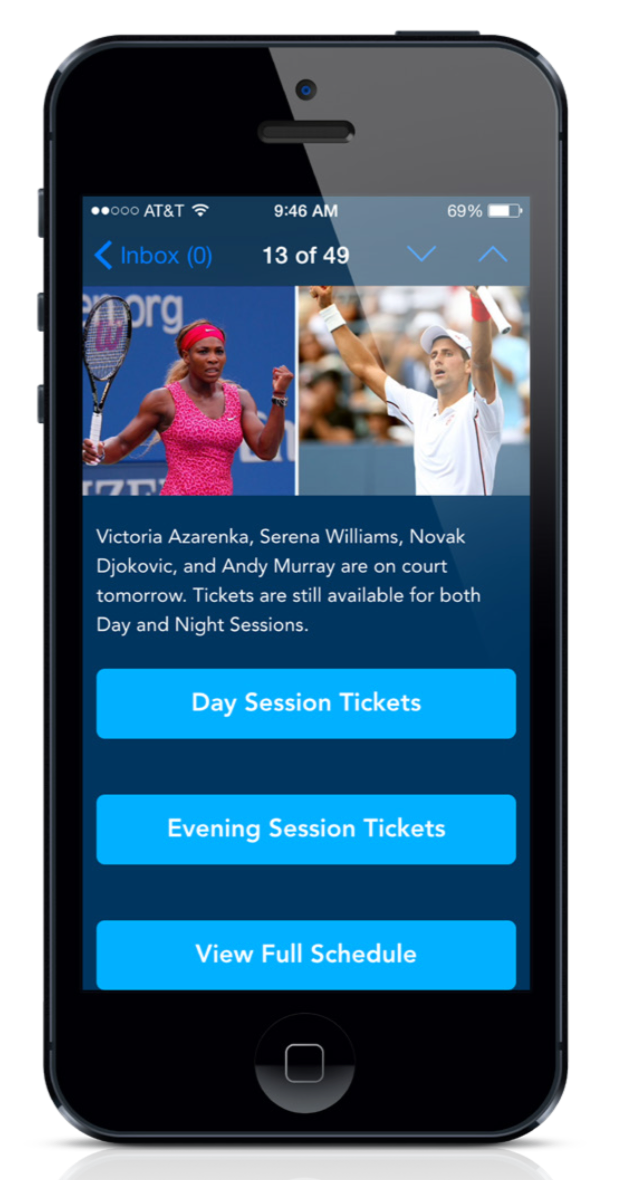
Do I need to write code to create in-app messaging?
No. Whether they are straightforward text-focused banner messages or rich HTML5 full-page displays, in-app messages provide marketing and content teams an easy to way to communicate key news without making a code update.
In Urban Airship’s Engage Composer, you can create in-app messages just as easily as push notifications. (See more about creating an in-app message in our Docs.)
 What kinds of messages is in-app marketing best suited for?
What kinds of messages is in-app marketing best suited for?
In-app messaging helps you make the most of in-the-moment opportunities to connect with your users. The use cases are limited only by your imagination. But many of our customers find in app marketing especially useful for:
Onboarding
A short series of in-app messages that help welcome your users to the app is a great way to demonstrate the value and ease of use of your app. The first time a user opens your app is the best opportunity you have to communicate the unique value proposition of the app. Walgreen’s does a nice job explaining the value of opting in with its welcome tour on first app open.

Feature Introduction
The moment a user is in the app is the best moment to let them know what else they could be doing to get the most out of the experience. This could take the form of a “Quick Tip” style message to direct your user to a feature you think (perhaps based on their behavior, profile or other indication) they’d value.
Promotions
When a user is in the midst of interacting with your app and your brand, they’re more likely to be receptive to special offers or promotions. Offers that are individualized are even more likely to earn engagement. When the US Open used this approach for a special offer on tickets — segmenting based on location and previous in-app behavior — they achieved a 32% conversion rate. (Download the case study here.)
In-app marketing messages are also ideal for promotions for your brand’s overall mobile experience. For example, segment all app users not opted-in to push notifications and encourage them to consider (or reconsider) opting in. Show and tell them what they’ll get if they do — early access, special deals, etc.
Providing Utility
Giving users updates on their account or recent purchases is another fantastic way to use in-app messaging.
For example, you could remind a user that they have a credit to spend with you — and how much they have. Put that together with a button pair “View Details / Shop Now” and you have an experience that feels very personalized and has high utility.
Our mobile messaging solution Engage (which you can try for free anytime) is best known for its push notifications capabilities. But that’s just one of the tools built into it. It also enables in app marketing campaigns with an out-of-the-box in-app message center and in-app messaging. Along with Reach, our mobile wallet marketing tool, our solutions help you deliver messages to 100% of your mobile audience — in real time, at the right time.
Ready To Get Started?
-
Learn more about our Engage solution, which includes push notifications, in-app messaging, and message center. It’s got plenty of out-of-the-box, ready-to-use features to get you up and running quickly. When you’re ready to test it out, you can get started for free.
-
To get more ideas on how to use in-app messaging check out our In-App Campaigns Inspiration Guide and our Message Center Inspiration Guide.
-
To dive in on the nitty gritty details of creating in-app messages in our Engage composer, browse the In-App Messaging Topic Guide in our Docs
-
Check out our cheat sheet, In-App Messaging Explained for even more on in-app marketing messages.


